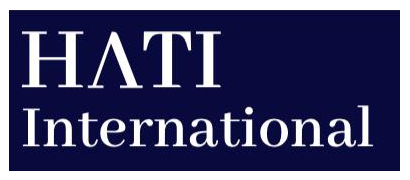Why Real-time Supply Chain Management is Important in Healthcare
According to MarketsandMarkets, the value of the healthcare supply chain management market is slated to reach USD 2.22 billion by 2021. In this changing landscape, the stakes for managing the costs and efficiency also increase.
This is also evident from Cardinal Health’s survey, which says:
- 40 percent of surgical staff and hospital supply chain decision-makers knew of a case being canceled due to missing supplies.
- 23 percent reported they saw or heard a patient being harmed due to a lack of supplies.
- 92 percent saw the need for an inventory management system designed for the specific volume and nature of supplies in the OR.
These numbers hint at the need for a data-driven course of action to integrate real-time supply chain with smart healthcare facilities.
Supply chain in healthcare includes team collaborations, processes to move medicines and equipment, and following the best processes. At the same time, it also needs to be planned well. Real-time Supply Chain Management takes these steps to the next level. That said, here are the top reasons that make real-time supply chain management indispensable for healthcare organizations.
Stock Value Minimization, Cost Reduction
When it comes to healthcare, there are numerous medicines, medical devices, and implants that come with a high price tag. These are crucial for improving the quality of treatment for patients and extending their life. Sometimes, these medicines and equipment flow through the inefficient supply chain, affecting everyone who is a part of the healthcare system. For instance, the stocks may go waste due to excess inventory, product loss, product expiry, poor inventory tracking/ planning, etc. Think of it this way, there are cases where fragmented handoffs are involved before a product reaches the patient. Therefore, costs tend to go high.
As a solution to this, hospital leaders are using supply chain optimization to cut down the expenses. With real-time supply chain management practices, hospitals and health systems can curb product expirations, facilitate improved product recall, enhance cash flow with a reduction in excess inventory, etc. It also helps hospitals manage high-value products in a better way.
To put things in perspective, research showed that hospitals could safely decrease supply costs by an average of 17.7 percent or $11 million annually per facility.
Relay of Critical Information in Real-Time
IoT (Internet of Things) solves some of the most pressing problems in the supply chain efficiency. The approach includes a cloud platform (data analysis, sharing, visualization), user-centric and collaborated workflows, RFID tracking technology, etc.
For instance, RFID-tagged devices and implants, placed in smart supply cabinets, help in tracking the model number, serial number, expiry dates, purchase orders, and costs. This automatically shows up in the inventory profile. This way, healthcare facilities can get automatic alerts when the products go out of stock, are removed, get recalled or expired. Because this is done without any human intervention, the clinical staff can focus more on their patients and offer quality care.
Sensors and IoT devices can also be used to capture data from products’ barcodes. This can help the healthcare organizations place real-time order for the correct products and stock them up. For instance, it can also assist in placing orders automatically for certain products, which is stocked by the providers. With the transparency in the costs, providers cannot hoard the supplies. Using shared data right from the manufacturer to the hospital and to the point of use enables proper management of the inventory. This facilitates the accurate documentation of the product and workflow.
Staff Optimization
U.S. hospitals’ supply chains create $5 billion in waste each year, with most of the waste attributed to poor inventory management, according to a GHX quantitative research study.
The poor inventory management leads to nurses and other healthcare professionals spending more time on supply chain related tasks. In fact, 19 percent of nurses say “locating supplies and equipment” is the biggest waste of their time.
Real-time supply chain management can help automate transfers of the supplies to the wards, thereby eliminating the need for additional staff to carry the consignment every time it is needed. Additionally, healthcare facilities need not specifically hire, train, and retain supply chain management professionals with automation at the forefront.
Increased Efficiency
Real-time supply chain management system focuses on adopting a comprehensive approach with the use of analytics. This allows healthcare systems to make informed decisions in-sync with their broader objectives.
They need solutions that provide clinical staff as well as OR supply chain admins the necessary provisions to save time, support patient care and increase efficiency. This can be done by integrating systems as opposed to relying on separate systems.
For instance, they can improve the receiving operations in the warehouse with barcoded supply. This ensures that the documentation is accurate, and the material is made available as soon as possible. This to-the-point-reporting also has a positive effect on accounting along with the payout for the materials. This eliminates the need to pay for the goods that were never received.
Let’s not forget the fact that with real-time inventory visibility and predictive analysis, the efficiency of healthcare organizations can increase manifold.
Process Automation
Manual tracking the usage and status of supplies and medical equipment is labor-intensive and time-consuming. It is also prone to errors that translate to excessive waste, increased costs, and put the patients at a higher risk.
Automating the processes, including automated audits of the supplies, help the hospitals eliminate the errors to a large extent and ensure high-quality patient care.
For example, there can be a combination of BLE (Bluetooth low-energy) technology and AI to automate the tracking of medical equipment with location mapping. It can help healthcare professionals locate any object more precisely. With this, they are also able to access and manage facility equipment using tracking mechanisms and easily generate reports on how these are used across departments.
Also, online collaborative tools ensure that the management of the healthcare supplies – from the origin to the destination – is done in real-time. This also includes goods that are sensitive to temperature, humidity and are fragile.
Supply chain decisions are slated to become more insightful by implementing the latest technologies in healthcare organizations. It may be at its nascent stage, but the possibilities are endless. Let’s see how it will continue to play a pivotal role in the ever-changing world of health-care delivery.




